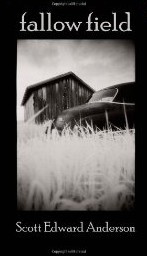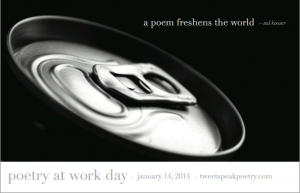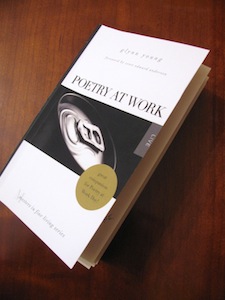In Poets and Poems today, consider this: a field lies fallow usually for one of two reasons. Either the farmer is allowing the land some time off, or the field is experiencing some kind of neglect. Or perhaps it’s been put to other uses, like a graveyard for a rusted automobile, a cemetery for memories and failures. In that case, the field assumes an air of rejection, barrenness and abandonment, like when a marriage fails.
Let Scott Edward Anderson tell the story of “Fallow Field”:
The old car is there,
where she left it,
out by the old shed,
breeding rust—obscured
from the roadway by the rye grass
that grows up all around.
Long triangular tentacles
blowing and bending
in the hot breeze, as
sunlight filters
through gathering clouds.
By now the grass has worked
up into the engine block.
The car
is planted now,
in this fallow field,
awaiting bulldozers.
They call this grass
“poverty grain, ” and there’s
no small comfort in the fact
that it’s as tolerant
of poor soils
as she was of her marriage.
On the day she left,
she packed her whole life
into an old grip: clothing,
framed photographs
of the children, her parents,
the salt cellar she’d bought
on her honeymoon in Rome.
While packing, she’d given
pause that her whole life
had become so
portable, where once there’d
been permanence. And now,
she blows and bends—
rye grass on a midsummer afternoon.

Many of the poems have been previously published in poetry and literary journals, and so to bring them together in a volume like this is to allow a glimpse of how a poet and his poems have developed over time. It’s also helpful to pay some attention to Anderson’s blog, The Green Skeptic. He’s had an interesting career in business, and is currently the global marketing director for Cleantech at Ernst & Young. His poems and his business vision spring from the same source.
It’s easy to like these poems. They read easily and well. They are about familiar things. And yet they do what good poetry should do, and that’s to provide a different view, an unexpected perspective, taking the familiar and bathing it in unfamiliar shades and colors. Anderson even includes a bit of unvarnished biography in the two concluding poems of the volume, “The Poet Gene” and “The Postlude, or How I Became a Poet.”
Anderson’s poems have appeared in such journals and magazines as the Alaska Quarterly Review, American Poetry Review, and Nebraska Review. He’s also the author of Walks in Nature’s Empire: Exploring the Nature Conservancy’s Preserves in New York State. (He also wrote the foreword to my just-published book, Poetry at Work.)
Fallow Field is just like that field set aside, waiting for the reader to apply some mental tillage and cut through soil to create life—life brought to harvest in poetry.
Image by ex_magician. Sourced via Flickr. Post by Glynn Young, author of the novels Dancing Priest and A Light Shining, and the just-published Poetry at Work (T. S. Poetry Press).
Buy the book Poetry at Work
Celebrate Poetry at Work Day
_____________________________

Visit the official Poetry at Work Day poster page to order
_____________________________
Poetry at Work, by Glynn Young, foreword by Scott Edward Anderson
“This book is elemental.”
—Dave Malone
- Poets and Poems: Catherine Abbey Hodges and “Empty Me Full” - November 19, 2024
- “The Colour Out of Space” by H.P. Lovecraft and Sara Barkat - November 14, 2024
- Poets and Poems: Robert McDowell and “Sweet Wolf” - November 12, 2024

Maureen Doallas says
The wonderful thing about a fallow field is the opportunity it offers to plow it into something new when its period of rest is done.
Scott’s poems are wonderful.
Scott Edward Anderson says
You are very kind, Maureen.
Glynn says
Maureen, you usually do manage to make a comment that sounds like a poem. Thanks for reading!
SimplyDarlene says
Wow, that piece is some kinda awesome. I wonder what “old” in the poem means? For me, I reckon it to be the 1940’s.
Thanks, sir Glynn!
Since it’s
been said by
a man in the know:
poetry provides
different
views –
If only
politicians dribbled
ink
over fried squabbles,
spread it
with spoons
on their baloney
sandwiches –
Their blue
black
maybe even red
teeth
might better
speak
truth.
Scott Edward Anderson says
Thank you, Darlene. Indeed, I had thought of the “old car” as being from the 1940s. The cover photo of my collection gives such a hint as well.
SimplyDarlene says
Oh dear, of course, I see the image now. Sometimes I flit through posts too quick to see everything – then again – sometimes I’m just too mesmerized by words to see outside of my imagination!
Thank you, sir Scott, for your words. I look forward to more.
Blessings.
Glynn says
A poem is in the heart of the poet and the eye of the reader.